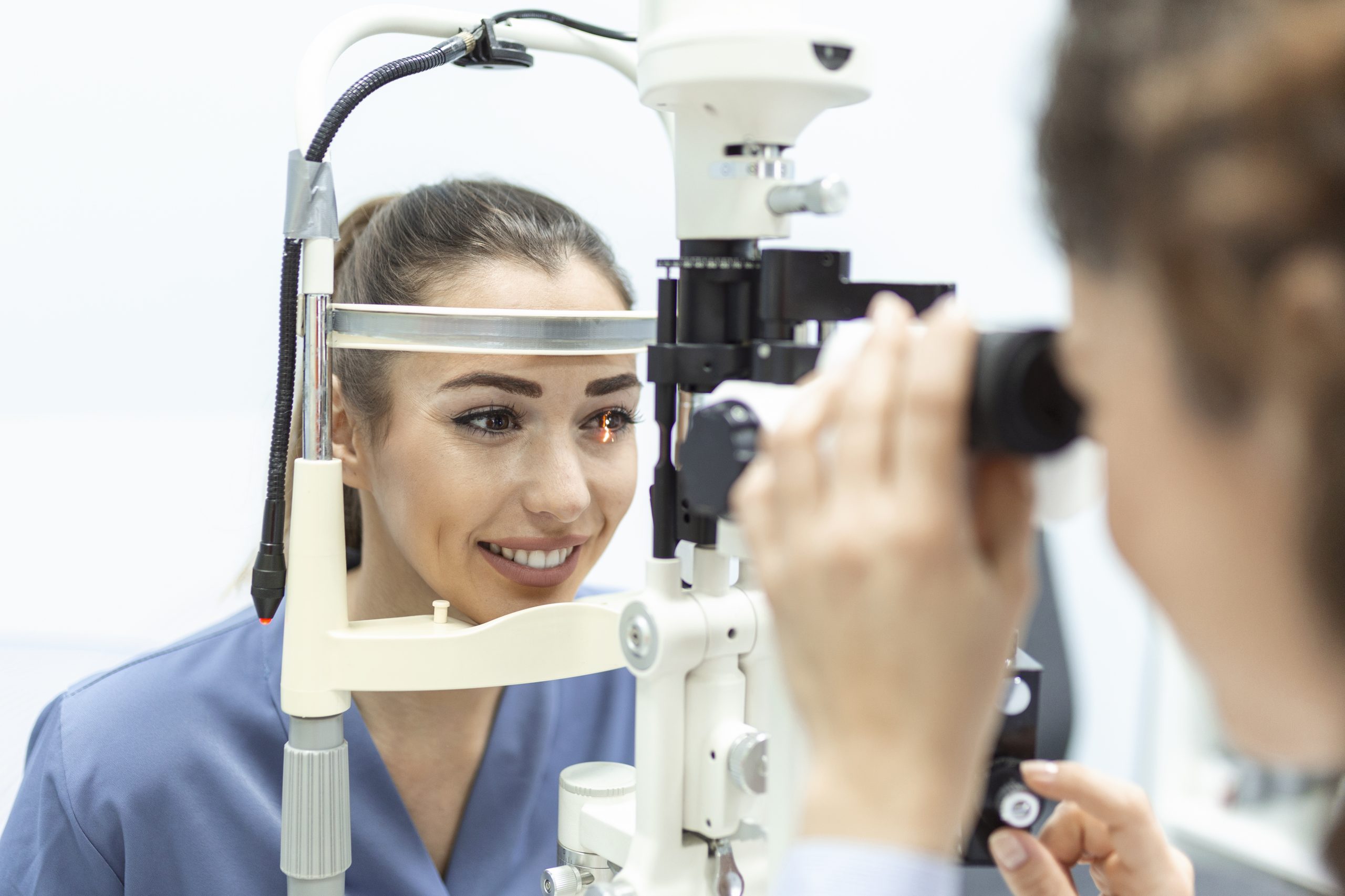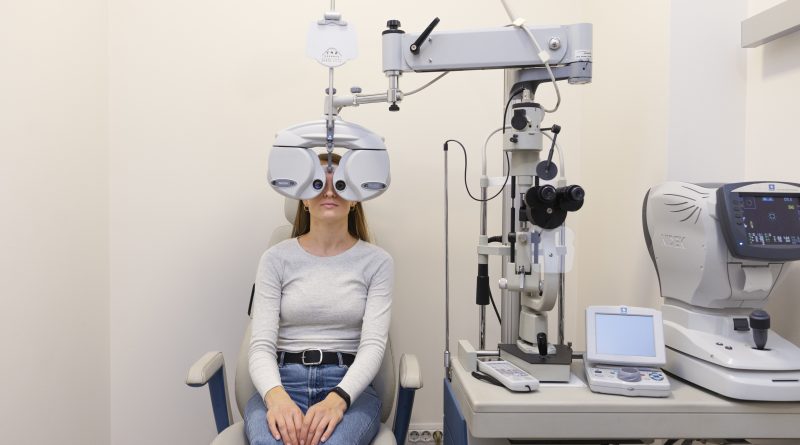Get Your Focus Right
 Want to know what causes cataract; how it can be prevented; how is it detected; how it affects the vision, can problems develop after surgery; what are the latest surgical interventions to treat cataract? Read on …
Want to know what causes cataract; how it can be prevented; how is it detected; how it affects the vision, can problems develop after surgery; what are the latest surgical interventions to treat cataract? Read on …
By Dr Rajesh Ranjan
If you are experiencing symptoms like blurry vision, trouble seeing at night, fading of colours, increased sensitivity to glare, halos surrounding lights and double vision in the affected eye, you must immediately seek medical advice, as these are unmistakable signs of cataract,
A cataract can occur in either or both eyes. It cannot spread from one eye to the other. It can interfere with daily activities and lead to blindness when left untreated. Although it may stop growing, it does not get smaller on its own.
Cataracts are common among people over 60 years old but can occur at any age. As people age, the inner lens of the eye becomes cloudy. This results in hazy vision, glare from lights and distortion of colour. The surgical removal of cataracts is a very common and highly effective procedure, and the standard treatment for cataracts. The cloudy natural lens is removed, and an artificial lens is implanted in the eye. After surgery, vision should be clear.
Cataract is a dense, cloudy area that forms in the lens of the eye. It begins when proteins in the eye form clumps that prevent the lens from sending clear images to the retina. The retina, as we know,works by converting the light that comes through the lens into signals. It sends the signals to the optic nerve.”
There are several underlying causes of cataracts. These include an overproduction of oxidants, which are oxygen molecules that have been chemically altered due to normal daily life include smoking, ultraviolet radiation, the long-term use of steroids and other medications, certain diseases, such as diabetes, trauma and radiation therapy.
There are different types of cataracts. They are classified based on where and how they develop in your eye. Nuclear cataracts form in the middle of the lens and cause the nucleus, or the centre, to become yellow or brown.Cortical cataracts are wedge-shaped and form around the edges of the nucleus.Posterior capsular cataracts form faster than the other two types and affect the back of the lens.Congenital cataracts, which are present at birth or form during a baby’s first year, are less common than age-related cataracts. Secondary cataracts are caused by disease or medications. Diseases that are linked with the development of cataracts include glaucoma and diabetes.

The use of the steroid prednisone and other medications can sometimes lead to cataracts. Traumatic cataracts develop after an injury to the eye, but it can take several years for this to happen.Radiation cataracts can form after a person undergoes radiation treatment for cancer.Risk factors associated with cataracts include: older age, heavy alcohol use, smoking, obesity, high blood pressure, previous eye injuries, a family history of cataracts, too much sun exposure, diabetes exposure to radiation from X-rays and cancer treatments.”
The most common tonometry test uses a painless puff of air to flatten your cornea and test your eye pressure. Your doctor will also put drops in your eyes to make your pupils bigger. This makes it easier to check the optic nerve and retina at the back of your eye for damage. Other tests your doctor might perform include checking your sensitivity to glare and your perception of colours.
The lens lies behind the iris and the pupil. It works much like a camera lens. It focuses light onto the retina at the back of the eye, where an image is recorded. The lens also adjusts the eye’s focus, letting us see things clearly both up close and far away. The lens is made of mostly water and protein. The protein is arranged in a precise way that keeps the lens clear and lets light pass through it.
“But as we age, some of the protein may clump together and start to cloud a small area of the lens. This is a cataract. Over time, the cataract may grow larger and cloud more of the lens, making it harder to see. Still the researchers suspect that there are several causes of cataract, such as smoking and diabetes. Or, it may be that the protein in the lens just changes from the wear and tear it takes over the years.
Treatment of Cataract
To treat Cataract we usually suggest stronger eyeglasses, magnifying lenses, or sunglasses with an anti-glare coating.Surgery is recommended when cataracts prevent you from going about your daily activities, such as reading or driving. It’s also performed when cataracts interfere with the treatment of other eye problems.One surgical method, known as phacoemulsification, involves the use of ultrasound waves to break the lens apart and remove the pieces. Extra capsular surgery involves removing the cloudy part of the lens through a long incision in the cornea.”
After surgery, an artificial intraocular lens is placed where the natural lens was. Surgery to remove a cataract is generally very safe and has a high success rate. Most people can go home the same day as their surgery.
The symptoms of early cataract may be improved with new eyeglasses, brighter lighting, anti-glare sunglasses, or magnifying lenses. If these measures do not help, surgery is the only effective treatment. Surgery involves removing the cloudy lens and replacing it with an artificial lens.
How does cataract affect vision?
Age-related cataracts can affect vision in two ways:Clumps of protein reduce the sharpness of the image reaching the retina. The lens consists mostly of water and protein. When the protein clumps up, it clouds the lens and reduces the light that reaches the retina. The clouding may become severe enough to cause blurred vision. Most age-related cataracts develop from protein clumping. When a cataract is small, the cloudiness affects only a small part of the lens. You may not notice any changes in your vision. Cataracts tend to “grow” slowly, so vision gets worse gradually.
Over time, the cloudy area in the lens may get larger, and the cataract may increase in size. Seeing may become more difficult. Your vision may get duller or blurrier.The clear lens slowly changes to a yellowish/brownish colour, adding a brownish tint to vision. As the clear lens slowly colours with age, your vision gradually may acquire a brownish shade. At first, the amount of tinting may be small and may not cause a vision problem.
Over time, increased tinting may make it more difficult to read and perform other routine activities. This gradual change in the amount of tinting does not affect the sharpness of the image transmitted to the retina. If you have advanced lens discolouration, you may not be able to identify blues and purples. You may be wearing what you believe to be a pair of black socks, only to find out from friends that you are wearing purple socks.
Can problems develop after surgery?
The problems after surgery are rare, but they can occur. These problems can include infection, bleeding, inflammation (pain, redness, and swelling), and loss of vision, double vision, and high or low eye pressure. With prompt medical attention, these problems can usually be treated successfully.
Sometimes the eye tissue that encloses the IOL becomes cloudy and may blur your vision. This condition is called an after-cataract. An after-cataract can develop months or years after cataract surgery.
An after-cataract is treated with a laser. We use a laser to make a tiny hole in the eye tissue behind the lens to let light pass through. This outpatient procedure is called a YAG laser capsulotomy. It is painless and rarely results in increased eye pressure or other eye problems. As a precaution, your doctor may give you eye drops to lower your eye pressure before or after the procedure.
(The author is Senior Eye Surgeon, Eye 7 Hospital, Indirapuram, Ghaziabad)

